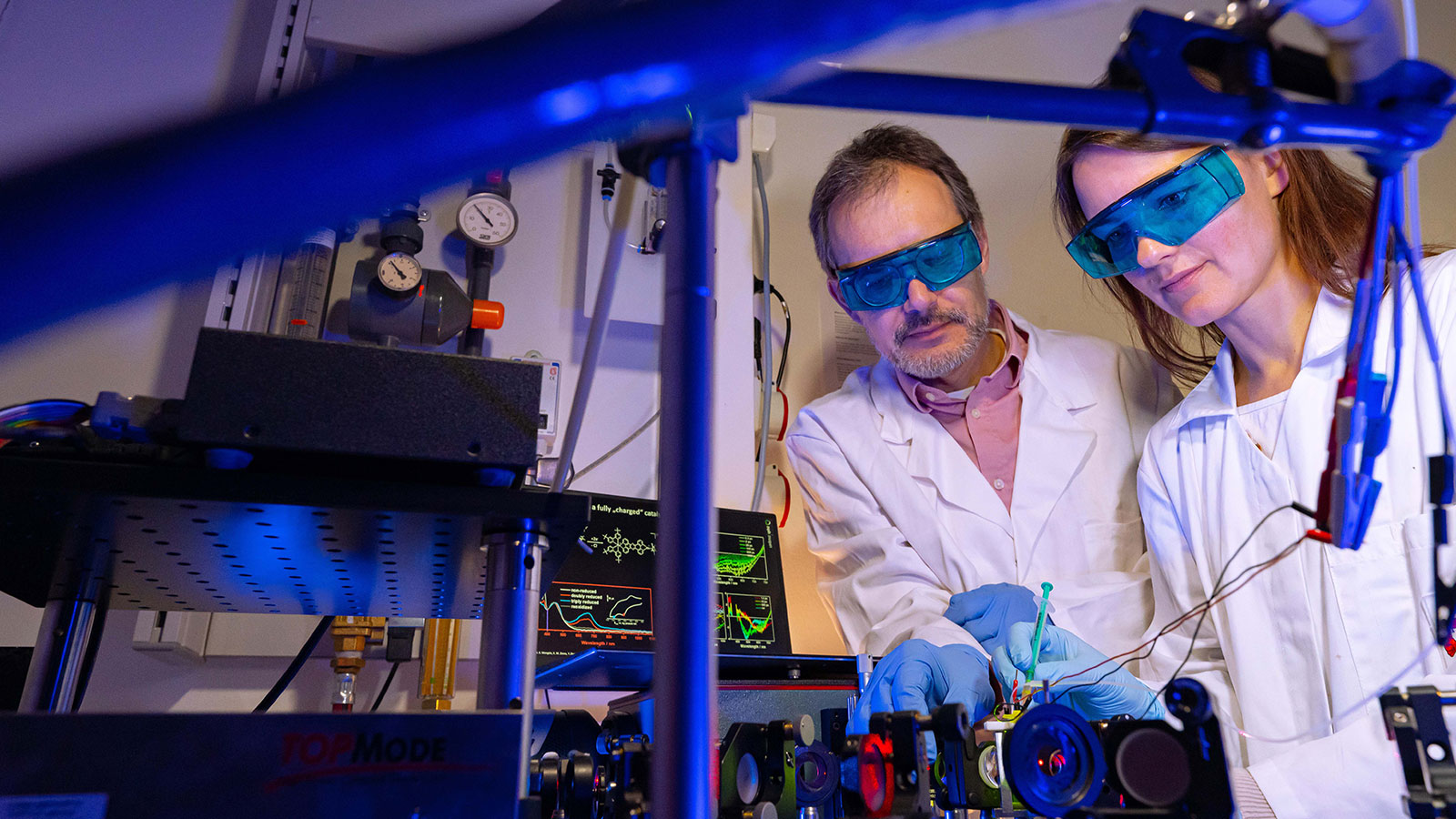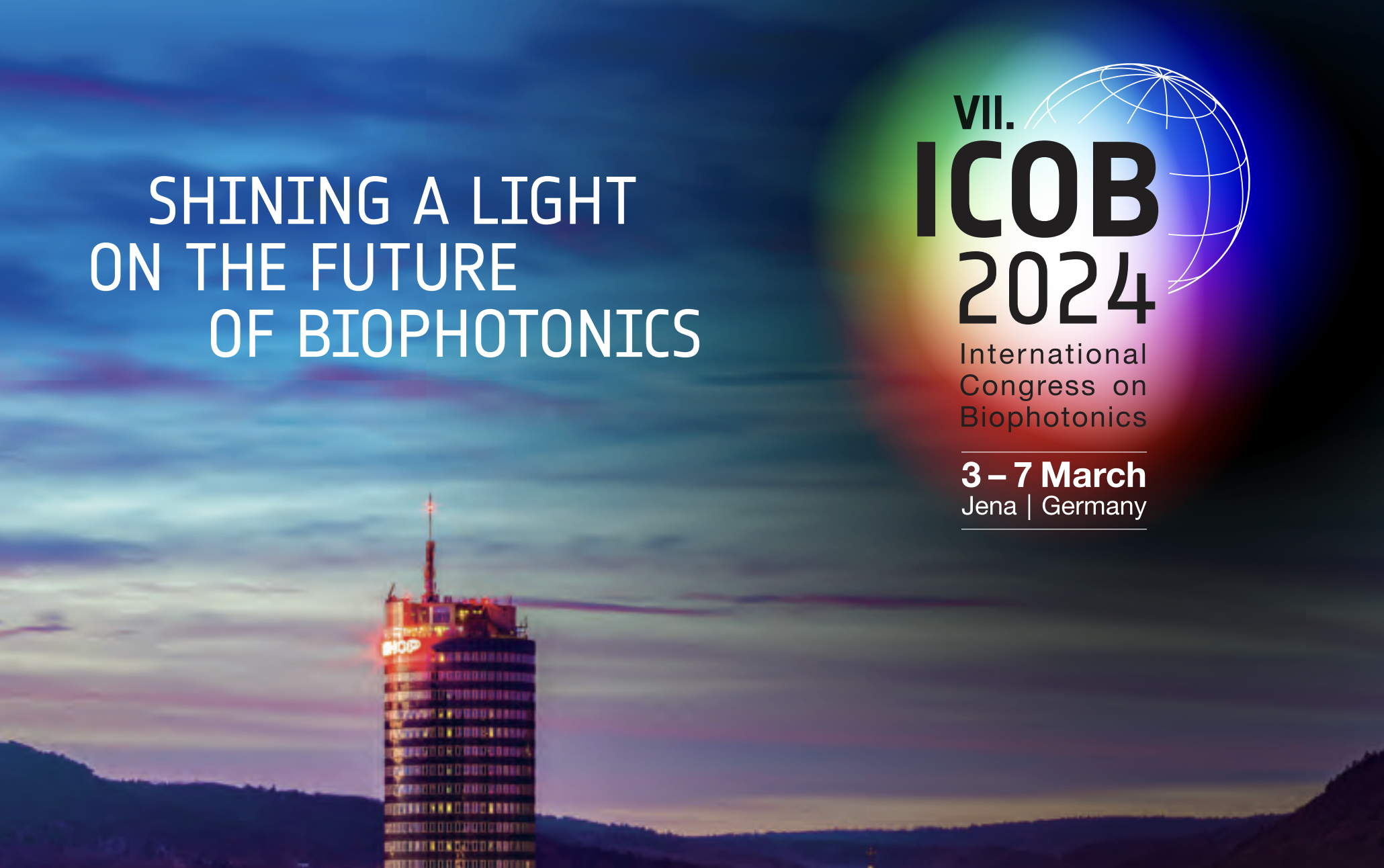Science Team from Jena Receives Thuringia Research Award for Applied Research 2023

Making the previously invisible visible – a research team from Friedrich Schiller University Jena and Leibniz IPHT is making this project a reality: Innovative spectroscopic methods allow the processes occurring during photocatalysis to be observed with previously unprecedented resolution and precision. For this achievement, Prof. Dr. Benjamin Dietzek-Ivanšić, Dr. Linda Zedler and Dr. Carolin Müller were awarded the 25,000 euro Thuringian Research Prize in the Applied Research category by Thuringia’s Science Minister Wolfgang Tiefensee in Jena on April 19, 2023.
Prof. Dr. Benjamin Dietzek-Ivanšić is Head of the Functional Interfaces Research Department at Leibniz IPHT and Professor of Physical Chemistry at Friedrich Schiller University Jena. The scientist is proud of his team, consisting of Dr. Linda Zedler and Dr. Carolin Müller, who now works at the University of Luxembourg, with whom he achieved important milestones in the study of photocatalytic processes: “This is a great motivation for further collaboration with the colleagues of the Collaborative Research Center ‘CataLight’ in order to gain new insights into the functioning of molecular photocatalysts.” Team colleague Dr. Linda Zedler, scientist in the Functional Interfaces Research Department, sees the award “as the completion of a long journey by a great team.”
Energy generation based on nature’s model
Meeting the growing demand for energy in the long term and sustainably can only be achieved through renewable energy sources. Solar energy plays a central role in the renewable energy mix. Researchers around the world are therefore looking for new ways to harness solar energy. “Nature shows us how this can work,” says Prof. Dr. Benjamin Dietzek-Ivanšić. Trees and other green plants use the energy of sunlight for photosynthesis. Natural light-capturing molecules, so-called photocatalysts, play a role in this process. These absorb the energy and use it to synthesize high-energy molecules. In this way, glucose and oxygen are produced in the plant from CO2 and light.
While the molecular processes of photosynthesis are well understood, the development of catalysts for light-energy conversion is challenging, especially for physical chemistry, which provides methods and tools to understand the structure and functioning of such catalysts. This is the starting point of the work of Prof. Dr. Benjamin Dietzek-Ivanšić and his team. “In particular, we want to investigate how the absorption of light takes place in the intermediate products of photocatalytic reactions and what chemical rearrangements this leads to,” explains Prof. Dr. Benjamin Dietzek-Ivanšić. Until now, this question could only be answered inadequately. “Only when these fundamental mechanisms have been elucidated we will be able to specifically adapt catalysts and reaction conditions in order to develop more efficient photocatalytic systems.”
New windows for the observation of light-driven processes
With time-resolved absorption spectroelectrochemistry and in operando absorption spectroscopy, the researchers have developed two experimental methods that make it possible for the first time to precisely observe the extremely short-lived intermediates as well as the course of photocatalytic reactions.
For time-resolved absorption spectroelectrochemistry, the researchers combined two methods, electrochemistry and time-resolved optical spectroscopy: First, the molecules to be investigated are electrically “charged” – chemically oxidized or reduced. The molecules prepared in this way have the same chemical properties as the intermediates of photocatalytic processes, except that they are more durable in the specially developed electrochemical cell and can be enriched to higher concentrations. This makes them much more accessible for subsequent optical spectroscopy and allows the light-induced processes as well as structural rearrangements in the molecules to be studied in detail.
Using operando absorption spectroscopy, the chemically unstable photocatalysts can also be observed practically “at work”. The photocatalysis is initiated by light irradiation and absorption experiments are carried out at different times during the processes taking place. In this way, the researchers obtain “snapshots” that depict the course of catalysis at different stages.
“I warmly congratulate the team on this outstanding achievement and award. By being able to observe photocatalytic reactions even more precisely, we are able to understand and elucidate mechanisms of water splitting with the help of sunlight even better. The colleagues have thus delivered an important milestone in deciphering solar energy as a future energy source,” concludes Prof. Dr. Jürgen Popp, scientific director at Leibniz IPHT.
About the Thuringian Research Prize
The Thuringian Research Award has been honoring top scientific achievements at Thuringian universities and non-university research institutions since 1995. Since then, more than 240 researchers have been awarded the prize. A jury of renowned scientists from all over Germany decides on the award.
Further information: www.thueringer-forschungspreis.de
About the Collaborative Research Center/Transregio CataLight
Leibniz IPHT is actively involved in the Collaborative Research Center/Transregio (CRC/TRR) CataLight (Light-driven Molecular Catalysts in Hierarchically Structured Materials – Synthesis and Mechanistic Studies). The focus of the CRC/TRR CataLight are photocatalytic active materials that can split water into oxygen and hydrogen.
Further information: www.catalight.uni-jena.de
In the picture:
Awarded: Prof. Dr. Benjamin Dietzek-Ivanšić (left in the picture) and Dr. Linda Zedler (right in the picture) during their research work.
©Jens Meyer/Uni Jena



